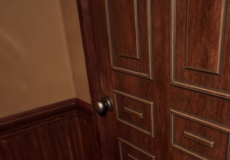

Room Escape: Strange Case
Advertisement
Room Escape: Strange Case begins with the player waking up in an unfamiliar room, surrounded by objects that seem out of place. There are no instructions, no dialogue, and no memory of how you arrived. The only clear goal is to get out. The room is filled with locked drawers, hidden switches, and strange symbols. Everything might be a clue, or just a distraction.
Advertisement
Similiar games
Room Escape: Strange Case begins with the player waking up in an unfamiliar room, surrounded by objects that seem out of place. There are no instructions, no dialogue, and no memory of how you arrived. The only clear goal is to get out. The room is filled with locked drawers, hidden switches, and strange symbols. Everything might be a clue, or just a distraction.
From the very start, the player must rely on observation. There are no characters to guide you, and no automatic hints. The challenge is to pay attention to every detail, from the way a painting hangs on the wall to the code scratched into the floor. The setting is quiet, but the tension comes from not knowing what’s coming next or what will trigger the next part of the puzzle.
Solving Clues to Unlock the Path
The game unfolds through a series of logic-based tasks. Some puzzles require pattern recognition, while others ask for item combinations or number sequences. Each solution opens something new—another box, another room, or a new piece of the story. The experience is slow and methodical, encouraging players to think before they act.
Typical puzzle mechanics include:
· Finding hidden objects in drawers, under furniture, or behind panels
· Rearranging items in a specific order based on visual clues
· Decoding messages using symbols or number patterns
· Combining tools like keys, screwdrivers, or wires
· Reading notes that offer partial hints for the next step
Each of these actions helps move the player closer to unlocking the final door. But the game doesn’t hold your hand—you have to experiment and explore.
A Story Told Through Environment
Room Escape: Strange Case doesn’t use direct storytelling. Instead, it reveals fragments of the situation through the setting itself. Notes left behind, photos on the wall, or unusual objects offer insight into who you are and why you might be trapped. The story feels like a mystery you discover by piecing together what’s been left behind.
As the player explores deeper, the rooms become more complex. New spaces bring different themes and design styles, making it clear that nothing here is random. Even though the game moves forward with each solved puzzle, it also encourages players to look back and reevaluate earlier clues. What once seemed meaningless might become important later.
Escaping With More Questions
By the time the player reaches the final door, there’s a feeling of accomplishment, but also curiosity. The game offers answers in pieces, leaving space for interpretation. You may escape the room, but the case remains open in your mind. What was the real reason for the trap? Who designed it, and what did they want?
Room Escape: Strange Case is about more than just solving puzzles. It invites the player into a quiet, contained world full of strange objects and unanswered questions. Each action brings you closer to freedom, but also deeper into a story that never fully explains itself. The experience stays with you after the final lock clicks open.
Discuss Room Escape: Strange Case
















